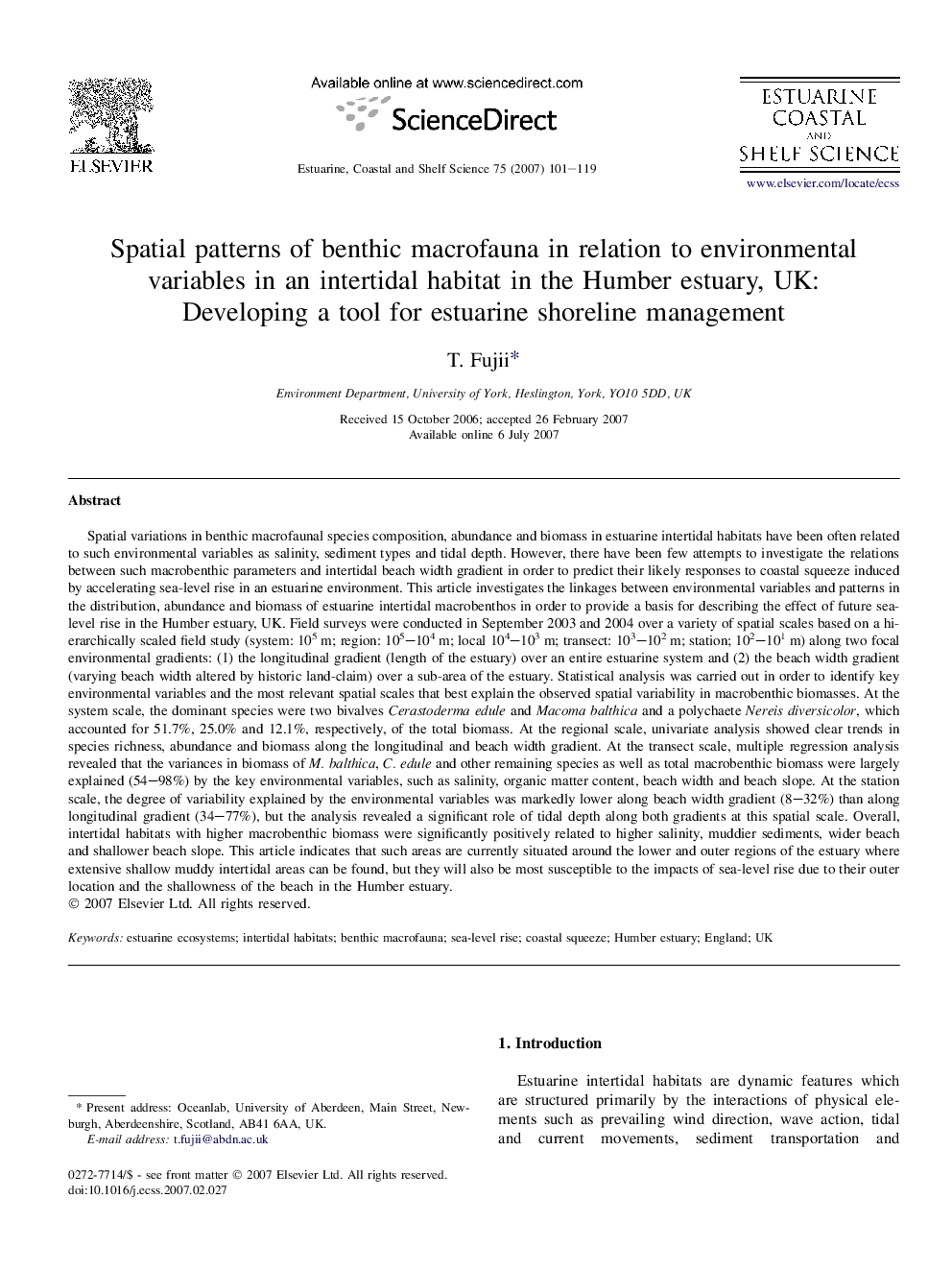| کد مقاله | کد نشریه | سال انتشار | مقاله انگلیسی | نسخه تمام متن |
|---|---|---|---|---|
| 4541725 | 1626701 | 2007 | 19 صفحه PDF | دانلود رایگان |

Spatial variations in benthic macrofaunal species composition, abundance and biomass in estuarine intertidal habitats have been often related to such environmental variables as salinity, sediment types and tidal depth. However, there have been few attempts to investigate the relations between such macrobenthic parameters and intertidal beach width gradient in order to predict their likely responses to coastal squeeze induced by accelerating sea-level rise in an estuarine environment. This article investigates the linkages between environmental variables and patterns in the distribution, abundance and biomass of estuarine intertidal macrobenthos in order to provide a basis for describing the effect of future sea-level rise in the Humber estuary, UK. Field surveys were conducted in September 2003 and 2004 over a variety of spatial scales based on a hierarchically scaled field study (system: 105 m; region: 105–104 m; local 104–103 m; transect: 103–102 m; station; 102–101 m) along two focal environmental gradients: (1) the longitudinal gradient (length of the estuary) over an entire estuarine system and (2) the beach width gradient (varying beach width altered by historic land-claim) over a sub-area of the estuary. Statistical analysis was carried out in order to identify key environmental variables and the most relevant spatial scales that best explain the observed spatial variability in macrobenthic biomasses. At the system scale, the dominant species were two bivalves Cerastoderma edule and Macoma balthica and a polychaete Nereis diversicolor, which accounted for 51.7%, 25.0% and 12.1%, respectively, of the total biomass. At the regional scale, univariate analysis showed clear trends in species richness, abundance and biomass along the longitudinal and beach width gradient. At the transect scale, multiple regression analysis revealed that the variances in biomass of M. balthica, C. edule and other remaining species as well as total macrobenthic biomass were largely explained (54–98%) by the key environmental variables, such as salinity, organic matter content, beach width and beach slope. At the station scale, the degree of variability explained by the environmental variables was markedly lower along beach width gradient (8–32%) than along longitudinal gradient (34–77%), but the analysis revealed a significant role of tidal depth along both gradients at this spatial scale. Overall, intertidal habitats with higher macrobenthic biomass were significantly positively related to higher salinity, muddier sediments, wider beach and shallower beach slope. This article indicates that such areas are currently situated around the lower and outer regions of the estuary where extensive shallow muddy intertidal areas can be found, but they will also be most susceptible to the impacts of sea-level rise due to their outer location and the shallowness of the beach in the Humber estuary.
Journal: Estuarine, Coastal and Shelf Science - Volume 75, Issues 1–2, October 2007, Pages 101–119